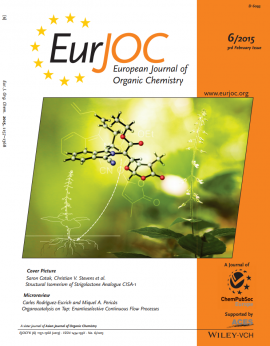Effect of Lewis acids on the stereoregularity of N,N-dimethyl acrylamide: A computational approach
Abstract
In this study, the effect of Lewis acid coordination (ScCl3) in controlling the stereoregularity during the free radical polymerization of N,N-dimethyl acrylamide (DMAM) has been investigated by Density Functional Theory (DFT). Experimentally, ScCl3, Sc(OTf)3 and Yb(OTf)3 have been used to increase the isotactic percentage in the polymerization of another acrylamide derivative, N-isopropyl acrylamide (NIPAM) (Habaue et al., 2002). The relative orientation of the terminal and penultimate side chains is expected to determine the stereoregularity in free radical polymerization reactions (Noble et al., 2014). We have analyzed the mechanistic details of the propagation reaction by considering all coordination types of the Lewis acid to the propagating species. Calculations have shown the bridging of the Lewis acid between the terminal side chain and the monomer to be the most probable pathway, which is in favor of the pro-meso propagation during the free radical polymerization of DMAM. In this case, it is the bridging capacity of the catalyst along the less crowded direction that dictates the preference for isotacticity. Overall, the strategy suggested in this study can be easily used by experimentalists in their endeavour of choosing the catalysts in order to end-up with the desired stereoregulation of the polymer chain.



